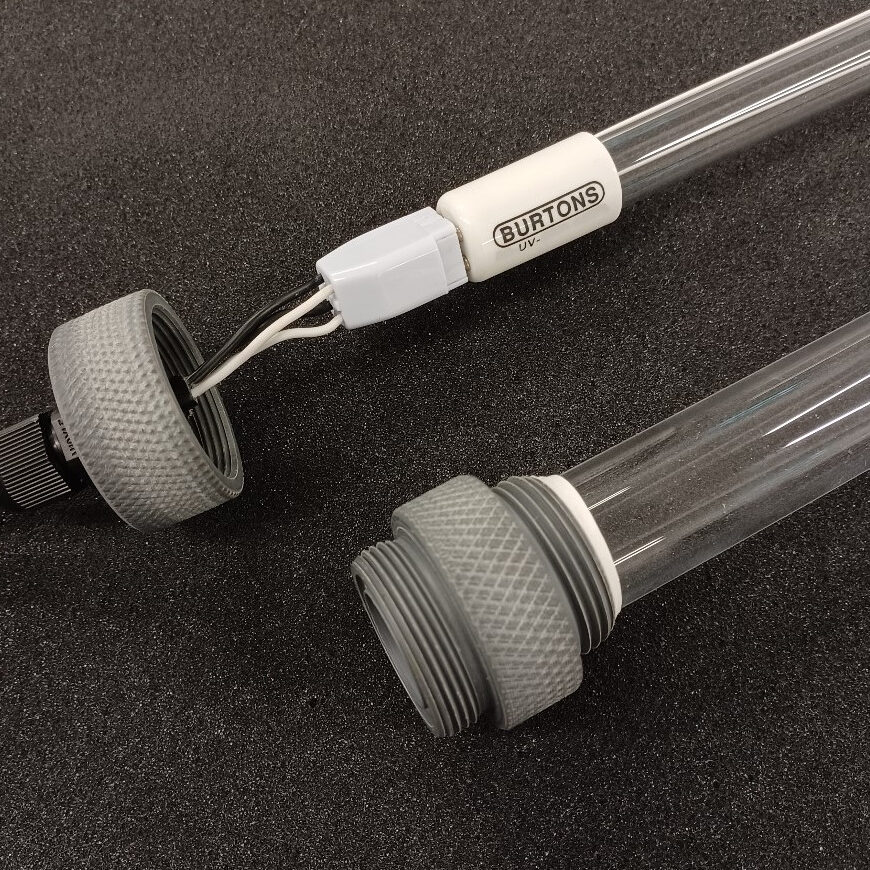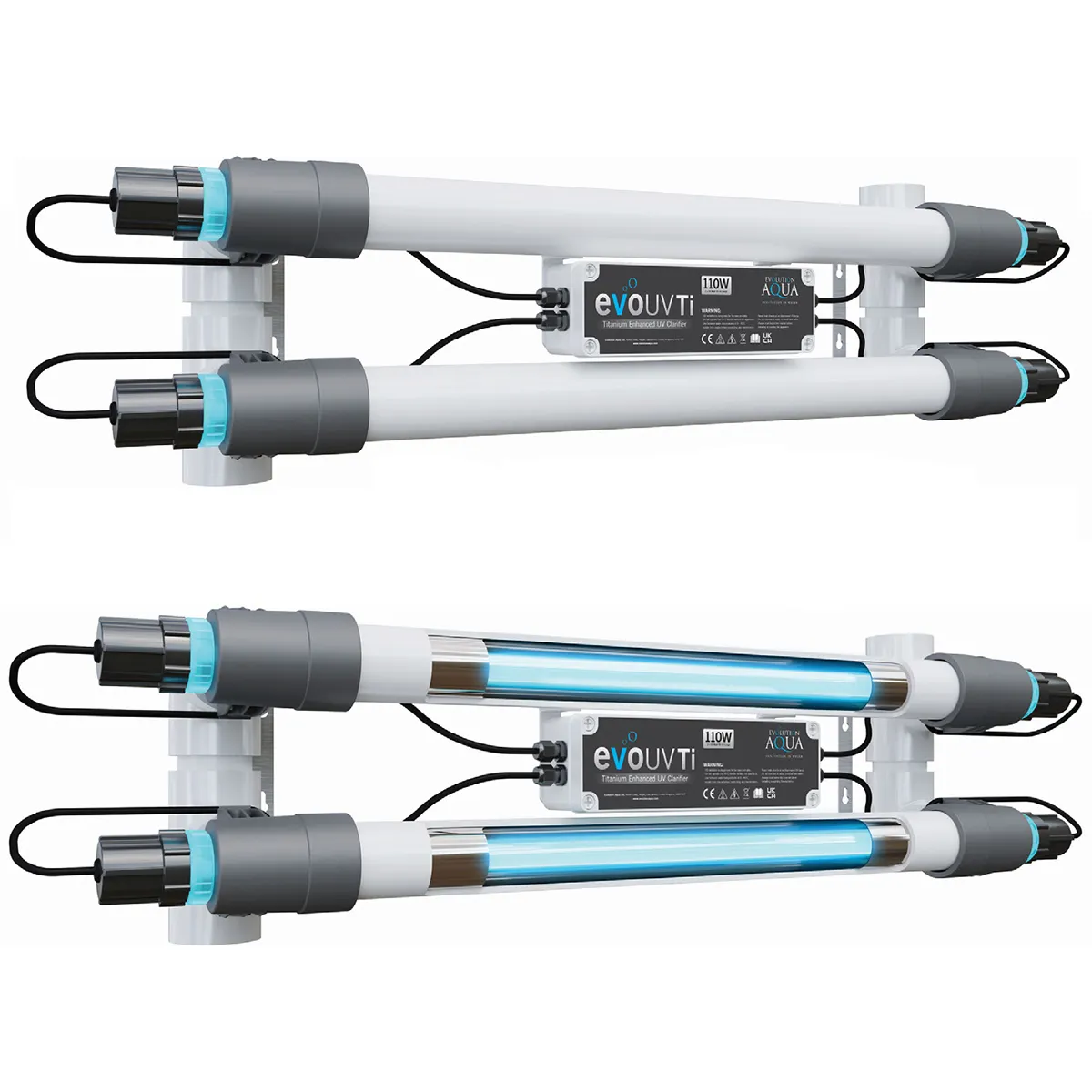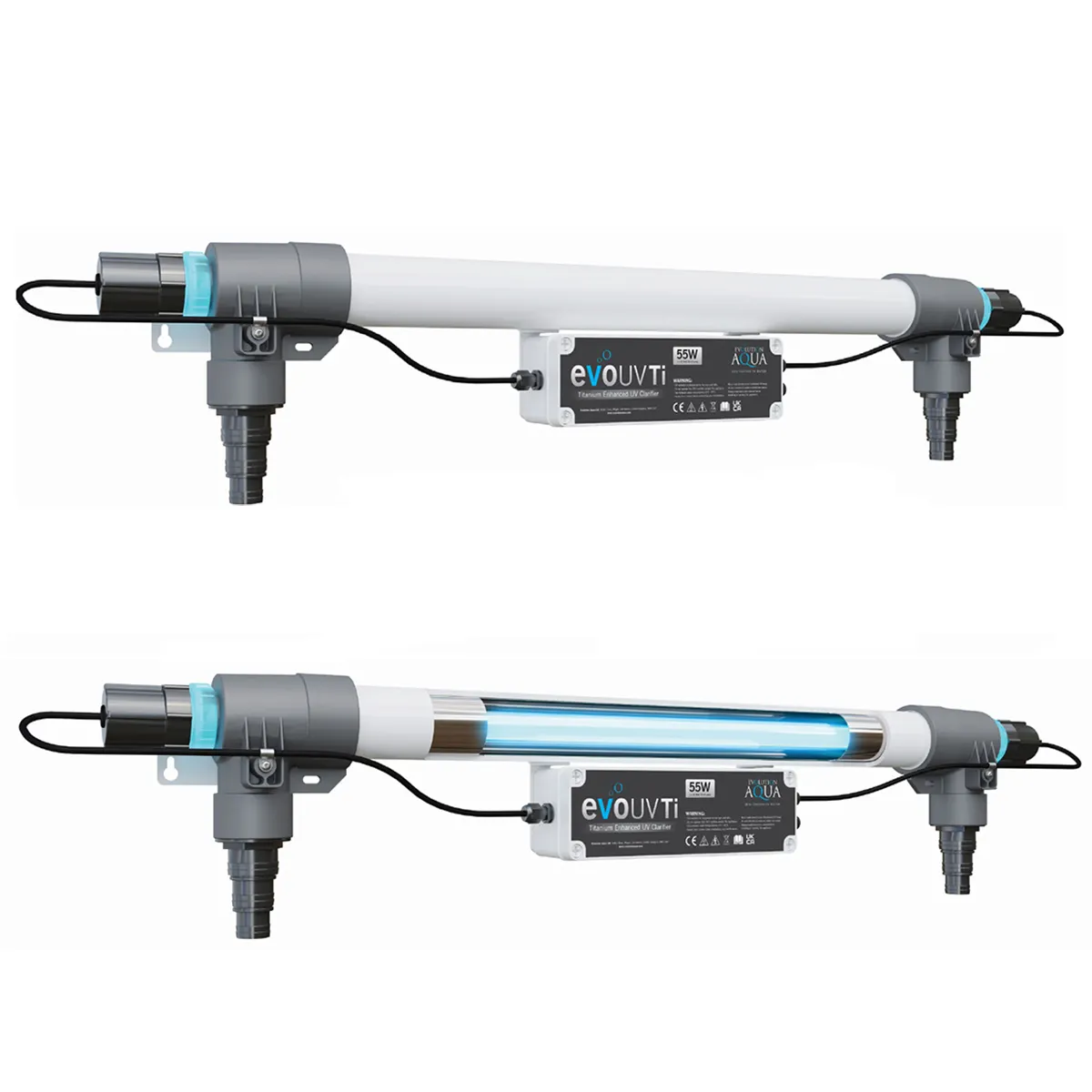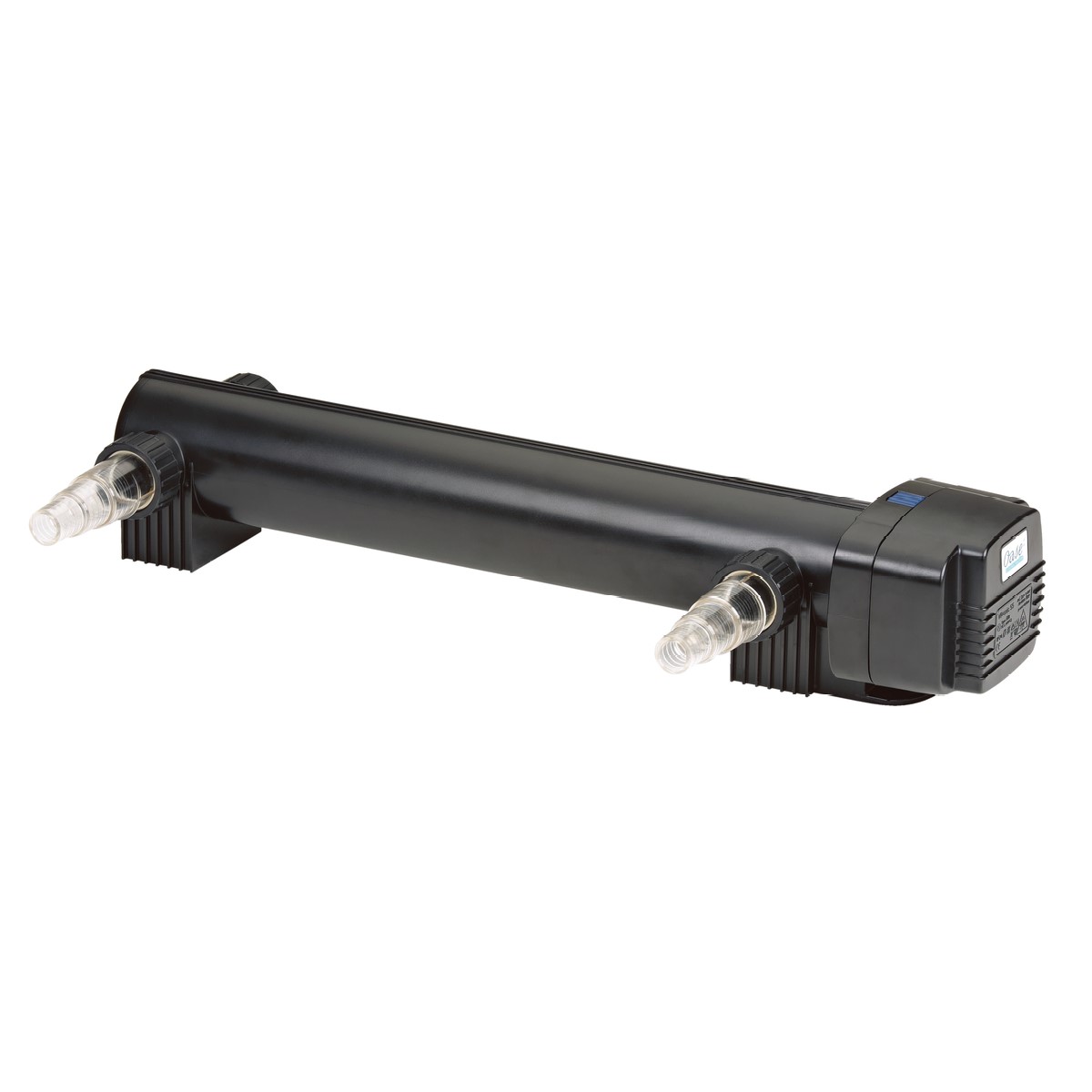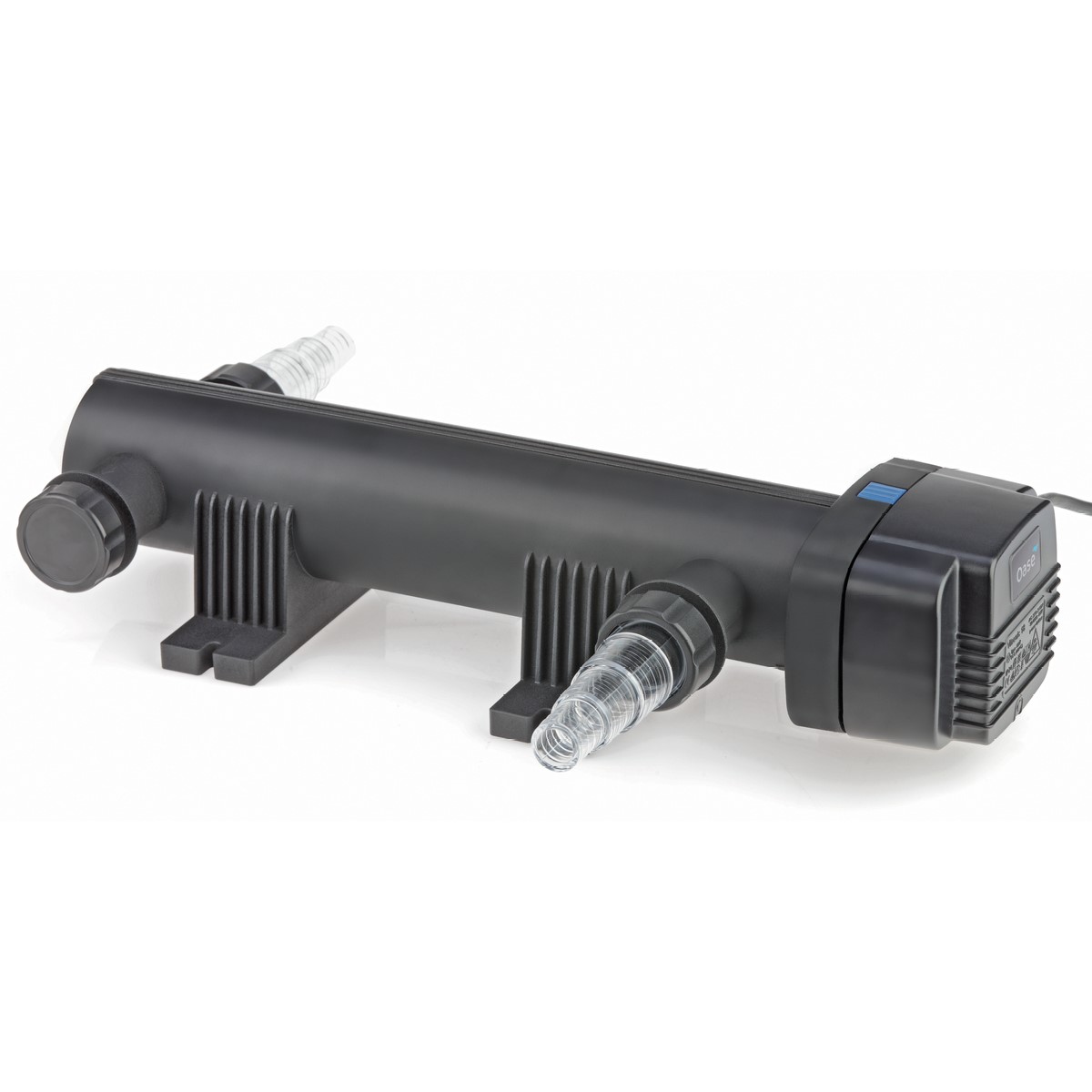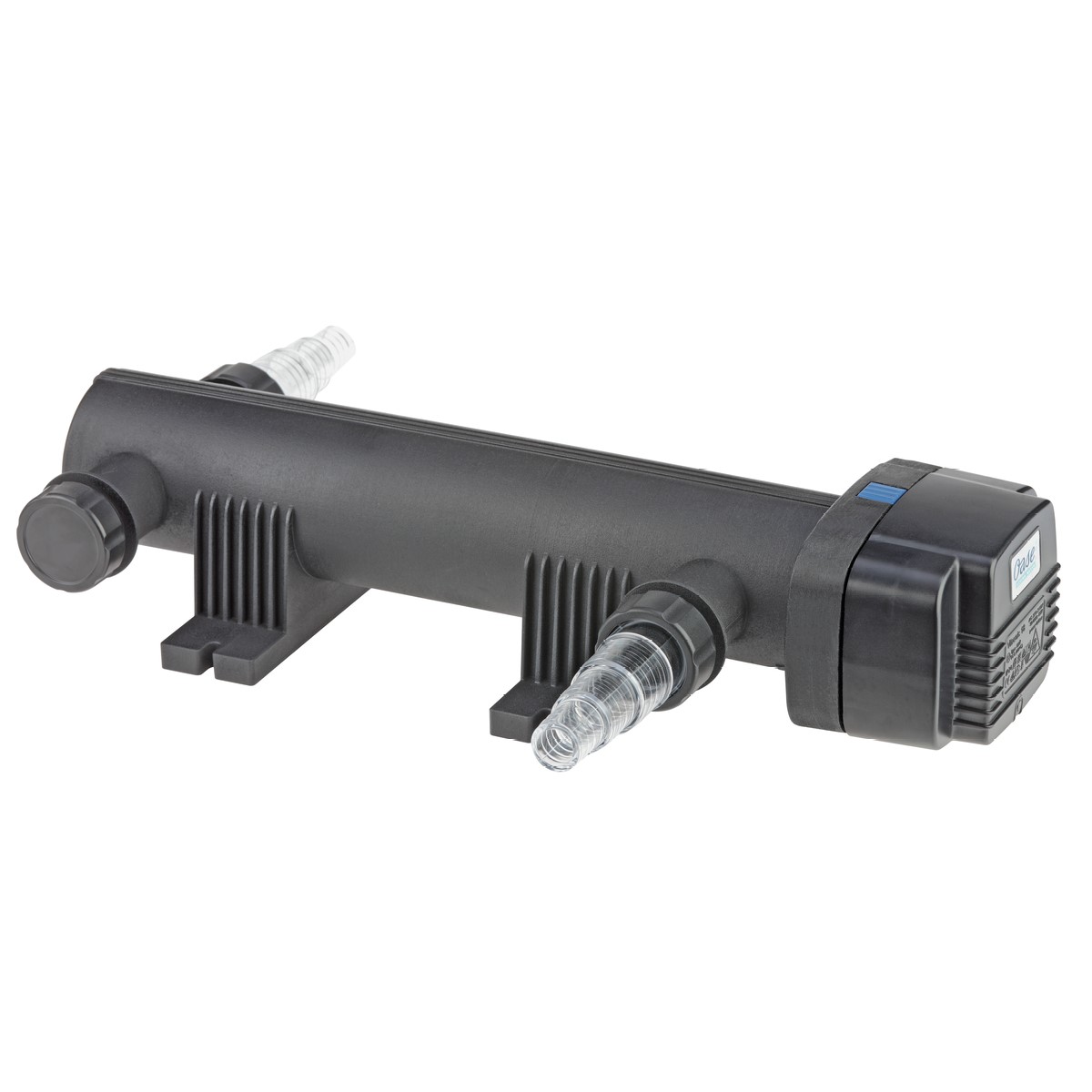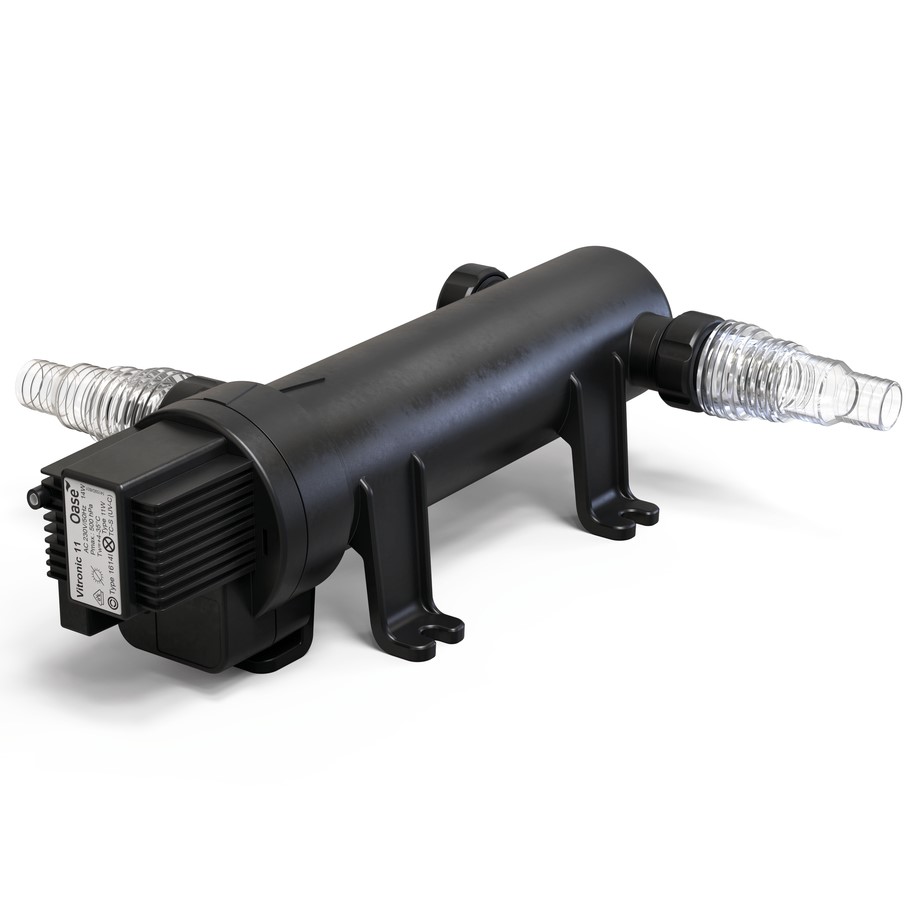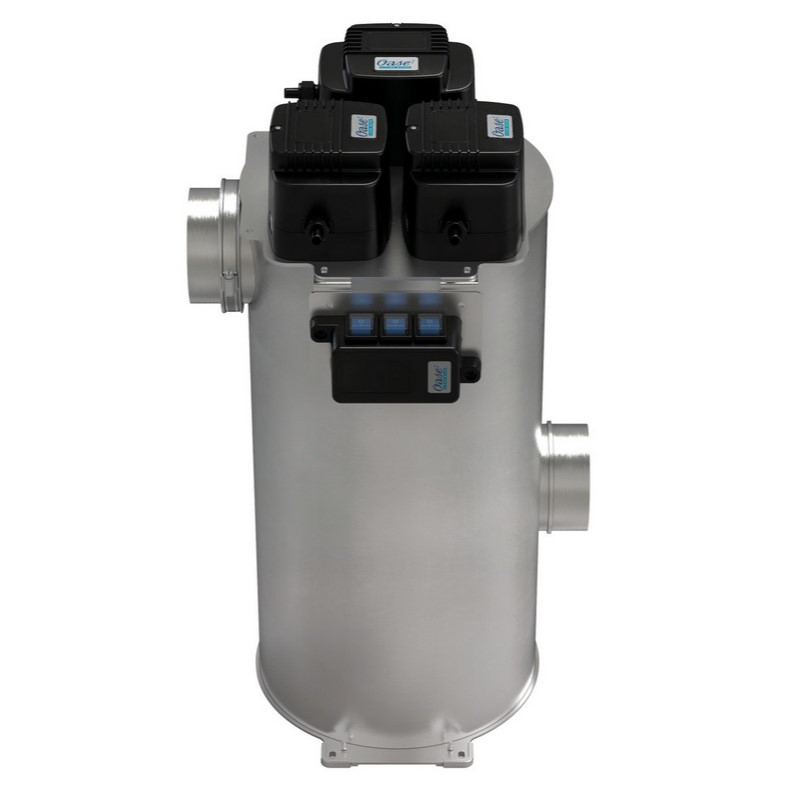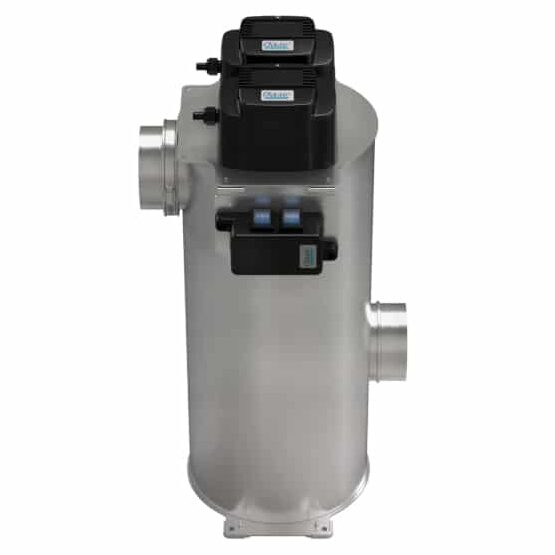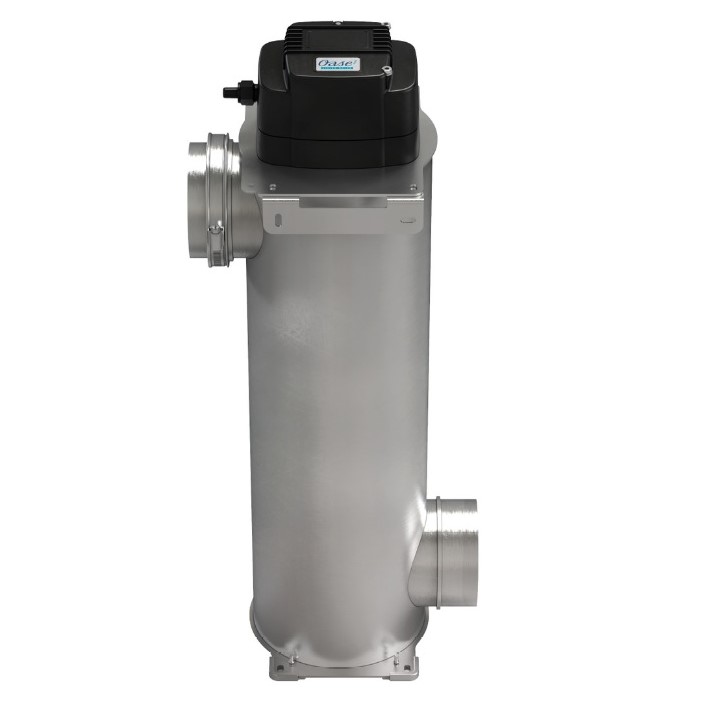Pond UV Lights (Ultraviolet Clarifiers) – Frequently Asked Questions
Below, we’ve compiled a list of frequently asked questions to help you understand the importance, functionality, and benefits of UV lights for maintaining a healthy pond ecosystem.
1. What is a pond UV light, and how does it work?
A pond UV light, or ultraviolet clarifier, is a device designed to control algae and harmful microorganisms in pond water by exposing them to ultraviolet (UV) radiation. UV clarifiers typically consist of a UV lamp enclosed in a quartz sleeve through which pond water flows. As water passes by the UV lamp, the UV-C light disrupts the DNA of algae, bacteria, and other pathogens, rendering them unable to reproduce and effectively controlling their population.
2. Why are UV lights important for pond health?
UV lights play a crucial role in maintaining optimal water quality and clarity in ponds by controlling algae blooms and harmful microorganisms. By targeting and neutralizing these organisms, UV clarifiers help prevent green water, algae overgrowth, and waterborne diseases, resulting in a cleaner, healthier pond environment for fish, plants, and other aquatic life.
3. What are the benefits of using a pond UV light?
- Algae Control: UV lights effectively eliminate algae spores and prevent algae blooms, resulting in clearer water and reduced maintenance.
- Water Clarification: UV clarifiers improve water clarity by eliminating suspended algae particles and organic matter, resulting in a visually appealing pond environment.
- Disease Prevention: By neutralizing harmful bacteria, viruses, and parasites, UV lights help prevent waterborne diseases and promote the overall health of pond inhabitants.
- Chemical Reduction: UV clarifiers reduce the need for chemical treatments such as algaecides and water clarifiers, promoting a more natural and sustainable approach to pond maintenance.
4. How do I choose the right UV light for my pond?
When selecting a UV light for your pond, consider factors such as the size and volume of your pond, the flow rate of your water pump, and the UV clarifier’s wattage and capacity. Choose a UV light that matches the flow rate of your pond pump and ensures adequate exposure time for effective UV sterilization.
5. Can I use a UV light in conjunction with other pond filtration systems?
Yes, UV lights can be used in conjunction with other pond filtration systems such as mechanical filters, biological filters, and skimmers to create a comprehensive water management system. Combining UV sterilization with mechanical and biological filtration enhances water quality and promotes a healthy pond environment.
6. How do I install and maintain a pond UV light?
Installation of a UV light typically involves mounting the unit near the pond’s filtration system and connecting it to the water pump or filtration system using appropriate tubing or plumbing connections. Regular maintenance includes cleaning the quartz sleeve and UV lamp to remove mineral deposits and debris, replacing the UV lamp as needed, and ensuring proper operation of the unit.
7. Are UV lights safe for fish and other pond inhabitants?
Yes, UV lights are safe for fish, plants, and other pond inhabitants when used properly. UV radiation emitted by the clarifier is confined within the sealed chamber, and exposure levels within the pond water are minimal. UV clarifiers target and neutralize microscopic organisms without harming larger pond inhabitants, making them an effective and safe method of pond water treatment.
8. Can UV lights be used year-round in ponds?
Yes, UV lights can be used year-round in ponds to maintain water quality and clarity, regardless of the season. While UV clarifiers are particularly effective at controlling algae blooms during the warmer months, they also help prevent algae growth and waterborne diseases during the winter months when pond water may become stagnant.
9. Do UV lights consume a lot of energy?
UV lights are relatively energy-efficient compared to other pond equipment, consuming minimal electricity to operate the UV lamp and ballast. The energy consumption of a UV clarifier depends on factors such as the wattage of the UV lamp, the flow rate of the water pump, and the duration of operation. Look for energy-efficient UV clarifiers with low wattage lamps and consider using a timer to optimize energy usage.
10. How long does a UV lamp last, and when should it be replaced?
The lifespan of a UV lamp varies depending on the model, usage, and environmental conditions, but most UV lamps last between 9 to 12 months before requiring replacement. Over time, UV lamps lose their effectiveness as the intensity of UV radiation decreases. It’s essential to monitor UV lamp performance regularly and replace the lamp according to the manufacturer’s recommendations to ensure continuous water sterilization and algae control.
If you have any further questions or require assistance in selecting the right UV Light for your pond, don’t hesitate to reach out and contact us.






